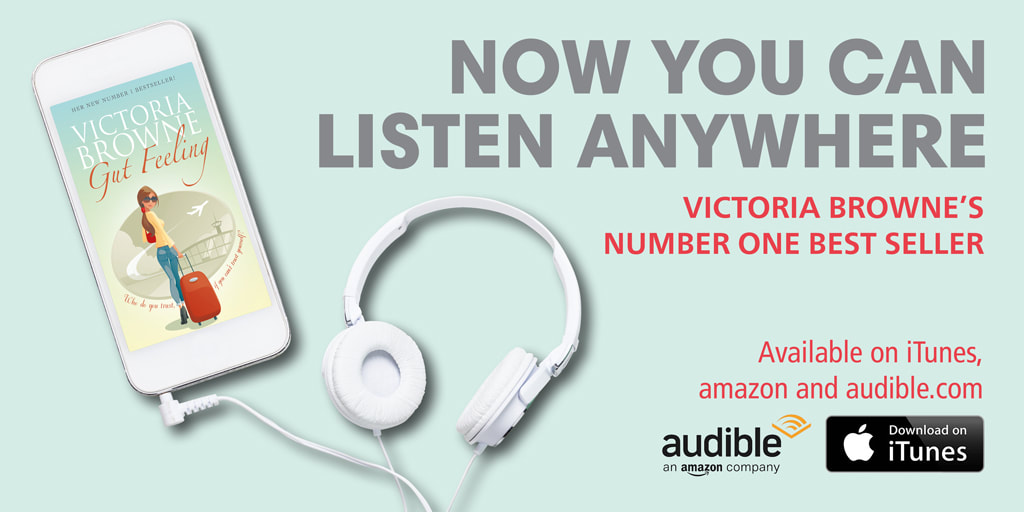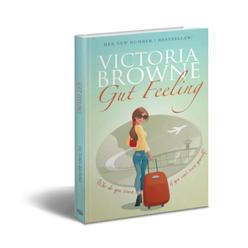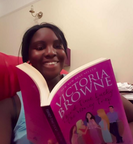|
Have you been harboring book ideas in your mind for years? Perhaps you've even started putting them on paper, but the process feels overwhelming. You're not alone. However, it's essential not to remain stuck in this cycle. Don't become the person who tells stories of unrealized ideas to future generations. Instead, let me share my process from idea to print, in the hopes of inspiring you to write your own story, regardless of how long it takes or whether you choose to publish it. Idea Generation: When an idea strikes, I first explore it in my mind. I contemplate the main focal points, potential twists, and what makes it unique. Staying within my thoughts, I develop a rough plotline, envisioning how the story will unfold. Transferring Ideas to Paper: To bring my ideas to life, I personally prefer using a word document, but you may choose pen and paper or whiteboard brainstorming. At this stage, I jot down the story's parts, not yet focusing on chapters. I aim to transfer the story from my mind to paper, refining it in the process. Sometimes the story may not work on paper, and that's okay—it might end there. Creating a Plot Draft: Next, I transform the story parts into rough chapter ideas. I make basic notes on the events I want to take place in each chapter, organizing the sequence and considering timelines. This stage involves several drafts, with breaks of a day between each one, allowing the story to breathe and gain clarity. Letting It Breathe: Taking breaks between drafts is crucial for the story's growth and clarity. By allowing a day or two to pass, you can approach the story with fresh eyes, often gaining new insights and perspectives. "Sleeping on it" proves beneficial in the creative process. Finalizing the Plot: Once my story reaches a stage I consider a final plot, I know I'm ready to proceed. By this point, I have spent four to six days immersing myself in the story, constantly refining the plotlines. If I'm not eager to start writing at this stage, then perhaps the book isn't worth pursuing anyway. Beginning with the First Chapter: With the final plot in hand, I'm eager to start writing. I use the plot as a guide to keep me on track. Before diving into each chapter, I review my plot draft, understanding the goals I want to achieve. Adding details and descriptions becomes easier with the guidance of the plot. Writing the Manuscript: Knowing what I'm writing, I establish a writing plan. Whether you're a full-time writer or have limited time due to other commitments, finding dedicated time for writing is crucial. Even short daily sessions can yield significant progress. The key is to prioritize and invest the available time. First Draft Manuscript: Upon completing the first draft, it's time to let it breathe again. Celebrate your accomplishment and prepare for a read-through. Starting from the beginning, go through the manuscript, making any necessary changes and improvements. At this stage, the manuscript is ready for editor critiques. Critiquing: Seeking feedback from an editor is essential. They will pinpoint inconsistencies, rushed sections, character development, story pacing, and overall tone. Incorporate their suggestions and send the revised manuscript back for further critiques if needed. Editing: Once the critiques are complete, the manuscript returns to the editor for editing and proofreading. This step involves correcting grammar, spelling, typos, and sentence structure. As a self-published author, you may not have access to extensive resources like big publishing houses, but thorough self-proofreading is vital. Final Manuscript: With the edited manuscript in hand, it's time to
2/10/2024
Stop TyposEnhancing Proofreading with a Helpful App: My Experience as a WriterAs a writer, one of my constant challenges is spotting typos in my work. Fortunately, I recently came across an app that has significantly improved my proofreading process. Being dyslexic, I greatly appreciate any assistance I can get in this regard. In this video, I share how this app has made my life easier, both in my professional and personal endeavors. I invite you to watch the video and share your thoughts by commenting below or on my YouTube channel. Don't forget to hit those all-important like buttons as well! The app I've been using is called Speechify, and it has been a game-changer for me. You can find more about it at their website: https://getspeechify.com/. Additionally, make sure to check out their Facebook page for updates and more information: https://www.facebook.com/getspeechify/. In my quest to improve my proofreading skills, the Speechify app has been a valuable tool. As a writer, I'm always on the lookout for ways to enhance my writing process, and this app has provided much-needed support. I encourage you to explore Speechify and see if it can benefit you as well. Let me know your thoughts and experiences in the comments section or on my YouTube video. Your feedback is highly appreciated! Note: This video and recommendation are based on my personal experience, and individual results may vary.
2/8/2024
How to Make an Audio BookMy Journey of Self-Publishing an Audiobook: A Personal Experience
Production Company Option:
Developing my audiobook with ACX.com was an enjoyable experience, and I highly recommend their services. However, it's worth mentioning that there are other companies available as well. I encourage you to research and find the best fit for your needs. Feel free to email me if you have any questions. For more writing advice, you can follow me on Instagram @VixBrowneAuthor and check out my videos under my bio. Good luck and have fun creating your own audiobook! Note: This blog post is based on my personal experience, and your journey may vary. First things first, have a clear plan of what you want to achieve, is it a mailing list, reviews, noticeability, book sales? So where do you start? The answer is everywhere. Get set up on all social media platforms if you are not already, think about the image you want to portray to your readers and followers. Now comes the juggling act. There are lots of ways to make your social media life easier, like linking your pages so that you can pin a pin on Pinterest and it automatically posts on your Twitter and Facebook page, the same with Goodreads. Then there is Buffer, a handy app that lets you schedule tweets and pins in advance and posts them for you. However there comes a time when you need to focus on what works best for you. The vast majority of successful authors will tell you that whilst they have mastered the social media juggling act, they focus their attention on just one or two social media platforms that work best for them. Social Media Platforms Twitter - Great for brand awareness and networking with bloggers. Facebook Fan Page - Great for brand awareness and showcasing. LinkedIn - Great for networking with professionals in your field and forums. Instagram - Great to connect with your readers in a fun creative way through images. Pinterest - Great way to advertise and connect with readers in a fun way. It is the latest BIG buz in the author world so make sure you have a business account set up and widgets on your website and blog. But lets look at Goodreads and YouTube more closely. Goodreads is the biggest book club out there. It has forums, groups, authors and bloggers and most importantly die hard readers. This is where you want to be spending your cyber days. Start to friend readers and follow authors, also make sure you are posting ratings and reviews. Direct message - Message the people, who have marked your book ‘to read,’ you could offer a free down load in return for an honest review. Goodreads Giveaway - Your book will be seen by hundreds of readers and the lucky winners of the Giveaway can be added to your mailing list. This not only helps build your mailing list but also builds it with readers who want to read your genre, and who will be interested in reading further books you write. They will also hopefully review your book and build on your review numbers. YouTube is a brilliant way of getting you, the author, and your books out there. Create your own channel and set up a YouTube platform. Here you can showcase you and your book. Show people who you are with fun videos and book trailers. Not confident in the art of video making? Click here and for $39 you can have SolaFide Publishing do it for you. All you need is a storyboard and a YouTube channel. There are some great sites out there like Animoto.com where you choose a template video, add your pictures from your storyboard and out pop’s a professional video. Animoto.com. You can pay for one months use for around $20 and make as many videos as you like and for as long as you like. I would recommend about a 1 minute for a book trailer. There are also sites like Flixpress.com were you can make video intros to add onto your book trailer. In the same way you choose a template, add in the words and out pops an intro trailer. Now that you have an intro trailer, a book trailers you will need to cut them together. You can do this in YouTube editor. Just upload your trailers to YouTube, but remember to mark the clips as private so no one can see them. Then go to YouTube Editor and you will see the videos clips in your editing page on the right hand side. From there you drag and drop, and cut down the video as required. After you’re done you will need to select a project at the top of the page and wait for it to appear back on your YouTube Chanel, now your ready to mark as public and share. And if you need help with the juggling act find a Book Publicist Publicists like SolaFide Publishing will manage your publicity. If you want to go down this route it is important to choose wisely and work with a publicist that is well connected. A publicist will do a number of things for you depending on what you are looking to achieve, book tours, generating reviews, interviews, book cover reveals and social medial promotions. The larger publicists have a large list of bloggers to connect you with and even connections with online publications to further spared your noticeability. Good luck x
9/27/2017
The Inspiration Behind 'Slip'A Short StoryIn 2012, I had an idea for two short stories. However, with my focus on writing my previous novels, it took me five years to finally bring one of them to life.
'Slip' is a poignant tale loosely based on a true story involving my mother and one of her sisters. The idea for 'Slip' had always resided within me, waiting for the right moment to emerge. I vividly remembered a lingering unresolved issue between my mum and her sister, who lived in Canada. Intrigued, I reached out to my mother, seeking to understand what had transpired. During my aunt's last visit, my mother confided in me, expressing apprehension. Like so many of us, years had passed with unsaid words and unaddressed tensions. Prior to her sister's arrival, my mother had composed a heartfelt letter, pouring out her thoughts and feelings, which she promptly sent to Canada. Although my aunt's visit was brief, it left an indelible mark. Our entire family came together, creating cherished memories. My mother, as the eldest, had two younger sisters and a brother, and that day became a treasured memory for me. All our cousins and their children joined the gathering, and joy permeated the atmosphere. Despite the pleasant day, my mother remained unsettled after my aunt's departure. It turned out that the letter had arrived late, and my aunt was unaware of its existence during her visit. The delayed revelation saddened my mother. However, a week later, my auntie called, and they engaged in a heartfelt conversation. They finally expressed sentiments that had remained unspoken since the 1940s. This series of events sparked a profound realization within me. What if my mother's letter had arrived before my aunt's departure? Would she have allotted more time to be with us? Could the day have been even more remarkable? Or what if they had picked up the phone and addressed their issues years ago? These reflections inspired me to write 'Slip,' urging others not to let time slip away without resolution. When my editor returned the final draft, she expressed her desire for a copy once it was published, intending to share it with her own sister. Additionally, I sent a proof copy of 'Slip' to my best friend, and her response deeply touched me. After reading the story, she reached out to her own sister, resolving a small issue that had been weighing on them. That heartfelt connection reaffirmed that I had indeed written a story with soul. 'Slip' will be available in November 2017, carrying with it a message of seizing the present moment and reconciling with loved ones. In this blog update, I express my gratitude to all those who have joined me on this journey, sharing my mother's backstory and finding inspiration within its pages. If 'Slip' resonated with you, I would be delighted to read your thoughts in a review. Thank you for your support and for being a part of this meaningful exploration. The story of 'Slip' is a work of fiction inspired by real-life experiences. Names, places, and events have been altered for narrative purposes. Why I wrote Gut Feeling & why I keep writingDyslexia can be a challenging disability for a creative writer, as the vocabulary in one's mind may not align with spelling abilities. This discrepancy often leads to substituting words on paper, inadvertently diminishing the impact of the writing on the reader. However, with determination and resilience, one can navigate this journey and discover their true potential. At the age of twenty, I found myself exploring various genres and writing styles, delving into erotica poetry and general philosophy. Reflecting on this phase, I now see the natural creative path I was carving for myself. Similar to an artist experimenting with different mediums, I was seeking my unique voice in the realm of writing. Realizing that I needed assistance, I sought help at twenty-four to overcome my spelling challenges. It was during this journey that I also discovered a weakness in my short-term memory, where information would easily slip away. Working with a therapist, I focused on developing my memory skills, going back to the basics to teach myself spelling. During my therapy program, my therapist encouraged me to write a diary as a means to enhance my reading and writing abilities. Reluctant to write diaries, I shared some romantic scenes I had written instead. In response, my therapist suggested building a beginning and an end around one of those scenes. And so, Gut Feeling, my first book, was born. Behind my writing journey lies a powerful "why." A teacher once told my parents that I wouldn't achieve much, and for a long time, I believed that prophecy. However, upon leaving school, I began to embrace the positive encouragement from my parents and grew to believe that I could accomplish anything I set my mind to. I write to remember my achievements, the commitment it took, and to defy the limitations others imposed on me. My "why" is simply, why not? Existing as a dyslexic writer exposes one to potential criticism, but my advice to fellow dyslexic writers is to never be embarrassed by your abilities; instead, be proud of them. Never give up and keep teaching yourself, continuously learning and growing. Remember, you are amazing. Dyslexia presents challenges for creative writers, but it also offers opportunities for growth and resilience. Embracing dyslexia and harnessing its unique perspective can lead to remarkable achievements. To all dyslexic writers, hold your abilities with pride, never be discouraged, and keep pursuing your passion. Your journey as a creative writer is truly remarkable.
1/11/2016
My First Radio InterviewWho in their right mind would put me on the radio? Someone who hasn't met me, clearly! namely Tom Cannon from #CroydonRadio However, I behaved myself and was quit professional about the whole thing. We had a nice lighthearted chat about my books, my writing process, and growing up with dyslexia and I didn't swear once. My mum did call to tell me that I said 'Oh God' a few times. I don't remember, but i'll take that over the f-word on local radio. Sorry mum x If you missed the show, don't worry I found their a pod cast :) yay! click the link below and you can listen to me being very professional and not embarrassing my friends and family like I normally do! The show is two hours, so to hear my interview simply fast forward to the last 25minutes of the show and there I am :) enjoy x Life is what you make it....
4/15/2015
Get Noticed
Getting noticed is my main goal, and so I am always looking for new ways to get my name and book out there. I thought that by asking friends, family and readers on my mailing list to post pictures of themselves reading my book would be a fun way of getting some much needed PR. And it is. I would recommend this to all new authors. It is a time consuming task but well worth the effort for three reasons. Firstly it helps to lift your confidence by seeing your book that you have put so much of yourself into, in a reader’s hand. Secondly it is a brilliant way to interact with readers on your mailing list, and thirdly, it gives you a great marketing tool to build on.
Getting reviews on Amazon. This can prove to be more difficult as people live busy lives. The importance of Amazon reviews is paramount and can really get you noticed, so to sweeten the deal you could offer free copies in return for a review. Book reviews are important for two reasons. Firstly you put a lot of effort into writing your book and most writers do this because, like me, they want people to read their work, (and hopefully enjoy it.) and Secondly, reviews are GOLD! the more reviews you have the higher you sit on your Amazon page. And if your goal is the same as mine, this will get you noticed. The first people you should approach for reviews are friends and family. However this is normally your least successful avenue. If you have already started to build a mailing list of readers then email your mailing list. Then get onto Twitter and make friends with bloggers. Be nice to bloggers because they can get you noticed and it is a labour of love for the vast majority of bloggers. Getting to the top page in your Amazon category? Keep a log of where your book is ranking in the category you chose. If a self-publishing company did this for you then check with them where you rank. You can change your category in KDP and Createspace to a less competitive category so that you are listed higher on the categories page. For example if you are in the category, General Romance you will be competing with thousands of other books, and books that have hundreds of reviews. Your book will never rank high in this category in its infancy. But another category with less books, and with lots of reviews from your friends, family, readers, and bloggers could push your book to the top. You can then make claim to being a number one best seller on Amazon. Even if you were only competing with fifty other books in that category! Keep it simple & smart (KISS) Share if you like this page,
3/1/2015
What's In Your Media Pack?My book launch is in 3 months and the last 3 months are alway the busiest. There are magazines to contact, newspapers, radio stations the works. This is why you should have a media pack ready to hand.
Publicity Media Packs What’s in yours? Do you have one? If not, get one set up! I have 11 things in my media pack. I may not need them all but they are all there in a file ready at a moments notice. 1) A press reales: This should have the following information: A. The Headline. About 25 words long, this is mine: (Normal girl next door defies dyslexia writing chick-lit novel, teachers said she would not amount to much so she based her characters on the girl she became.) B. The approach or angle. (My angle is an author with dyslexia ) C. All about you as an author of fiction and what makes you a credible source for the story. D. All about your fiction story. (Synopsis) E. Your contact information. 2) A tag line: My tag line for my first book "Gut Feeling" Was "Who do you trust if you can’t trust yourself" 3) A 40 to 50 Word synopses: 4) The official blurb: Your back cover synopsis 5) The elevator pitch: Have one prepared practiced to a tee so when people ask you "So what’s your book about?" dazzle them so they will run out the metaphoric lift and buy your book. Or if you are talking to a publisher or some kind your aim will be a request for more information about your book, or even a lunch meet. 6) No stone left unturned synopsis: This is for media only. If a publisher or newspaper wants to know the whole story they may ask for a full synopsis so they do not need to read the book, you need to include everything including the ending. 7) 5 to 10 Funny facts about you: Good to have to hand incase bloggers or newspapers ask you. Book trailers: You can make a good book trailer your self. I use sites like animoto and flixpress "My Book trailer for Third Time Lucky – The Honey Trap" 9) Author videos: Let the world know who you the author are. You can do this with a video of pictures or a video where you talk to the camera. I am currently working on the latter. 10) Short bio: This is a bio about you as an author here is mine. Victoria was born and raised in south London and now lives in California. Victoria left school and qualified as a dental nurse, she worked in Harley Street London before moving into the world of real estate. During this time she qualified as a mortgage broker and eventually opened her own real estate agency which she sold in 2012 and published her first novel 'Gut Feeling.' With a great deal of determination due to dyslexia Victoria progressed to where she is today, living in Santa Monica, with her Husband and cat Poppy. Victoria enjoys reading Sophie kinsella, Cecelia Ahern, Danielle Steel, Sebastian Faulks, J K Rowling / Robert Galbraith, to name a few. 11) Long bio: this should include more about your childhood, qualifications etc. Here is mine. "If I can do it, you can do it" You can do anything you want with enough passion and the right support. I finished writing my first book Gut Feeling in 2009 after a long struggle with dyslexia. Dyslexia is a cruel disability for a creative writer to have. I started writing when I was ten, however the vocabulary in my head did not match my spelling ability. I would find myself substituting words on paper in order to make my writing legible, unaware that is only detracted from my writing impact on the reader. Frustrated and angry, I got into trouble at school and left with poor grades. I put my writing to one side and focused on a career to pay the bills instead. I kept reading and writing in private with great difficulty until I sought help at the ripe old age of Twenty-five. One day I was happily reading Can You Keep a Secrete By Sophie Kinsella. As I read, I started to think that my book had a similar feel good factor and that my writing was nearly as good as Sophie's / Madeline's (minus the spelling errors and bad gamma). So I researched and found an editor. I asked him to appraise my manuscript then worked with him to polish it up ready for release in 2012. And the rest is history. Life is what you make it. Good luck x
1/1/2014
A writers business planThe importance of a Business plan for a writer is paramount. Having an internal plan helps you understand the gaps in your business model. It will also help you understand your personal and financial goals. The key to this plan is the “know your customer section” this is the section you should spend the most time on. DO YOUR RESEARCH! Do not think you know it all. Ask yourself questions and then find the answers. I have listed out the key questions you should have in your plan, you may want to add other questions depending on your business model. For instant, you may also be a public speaker or a life coach; maybe you want to write articles for magazines and newspapers. You can adapt your business plan any way you like. And do not forget your business budget plan. You can publish for as low as $1000 and as much as $25,000 this is why a business plan is paramount, it allows you to understand your goals and lets you set a budget so you can achieve them. I personally work out my business budget plan in excel and my business plans in word. The Business Type of business - Limited Company / sole trader? etc The Product Genre? Other services? Unique Selling Point of my product/services? Planning What resources, expertise & equipment will be needed? Resource Website - Hosted etc Advertisement - Where? Expertise - You, the author - Editor - Designers Equipment Computer system - What will you need? – Laptop – phone – printer etc Knowing your customer What are you customer’s needs? - Research this How would my typical customer buy my services? - Research this Customers will use my services because:? - Research this Would buying my services be a one off purchase? And why. - Research this Knowing my market Is my market in decline or growth? - Research this Knowing my local market Is my local market in decline or growth? - Research this Who is your competition? - Research this Short-term business goals - Short-term Financial goals – Year One - Long-term Business goals - Long-term financial goals - Advertising my business - Where? How? Promoting – special launch offers - What? & How? Skill gaps in my business - e.g. Graphic designers - e.g. Accounts - e.g. Editing How will I fill these skills gaps? - e.g. Commission a designer for my book cover and web banners - e.g. Find a good accountant - e.g. Commission an editor and proof reader ect Business Budget I factor in the following cost: Editing and proof reading Graphics for book cover designs Graphics for web banners or face book fan page banners Web site costs All advertising costs eg: Business cards Headed paper for press release letters Book fairs Flyers for book fairs Facebook adds Google add words Book convection administrations Good Luck x |
AuthorHello, my name is Victoria I am an author. I would like to share with you my opinion & experiences and I would love to hear your thoughts and opinions. Archives
July 2024
Categories |
Location |
|






 RSS Feed
RSS Feed